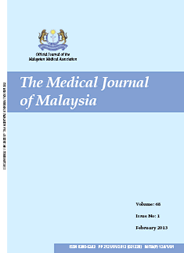MJM, Vol 70 Supplement 1 September 2015
Communicable Disease - Current and Future
Challenges
Ministry of Health Malaysia
ABSTRACT
Economic development has contributed to higher standards of living and urbanisation, especially in high- and middle-income countries. This has led to a demographic transition with reduction in birth rates and increasing life spans. The burden of illness has shifted from acute childhood infections to chronic non-communicable diseases. Nevertheless, the epidemiologic transition is not complete, unfolding at different rates around the globe. Emerging and re-emerging diseases are accompanied by new problems such as bioterrorism threats, increase of hospital-acquired infections, anti-microbial resistance and pandemic outbreaks, all have brought important new challenges to public health globally.
Although higher incomes and educational levels, improvements in nutrition, sanitation and sewage management as well as vaccines and medicines have all accounted for the dramatic decline in mortality during the 20th century, huge inequalities persist, and not everyone has been able to enjoy the fruit of public health successes and societal advances. As a result, some low- and middle-income countries have been left behind. Inequalities can also occur within a country. The poor health status in these sub-populations can be attributed to problems such as poverty, malnutrition, illiteracy, unsafe drinking water, lack of access to health services, social discrimination, and political conflict. Public health is presently being confronted with major challenges, especially in middle- and low-income countries containing longstanding infectious disease foci and where problems are perpetuated by political unrest, war, poverty and lack of adequate health and sanitation infrastructure. Ease of travel also facilitate spread of diseases and increases pandemic potential.
There is good reason for cautious optimism given all the progress that has been made in recent years on account of the tremendous efforts in public health. Political and financial support is needed to maintain and develop the gains achieved in the past century and to transmit the latest knowledge and technology to many parts of the world where preventable deaths measure in the hundreds of thousands. The potential for saving human life is high with current technology. The New Public Health calls for fair distribution of resources and the timely application of existing knowledge and tools; this mainly rests on political will, funding, initiative and training.
Keywords: communicable disease, epidemiologic transition, inequalities, public health.
